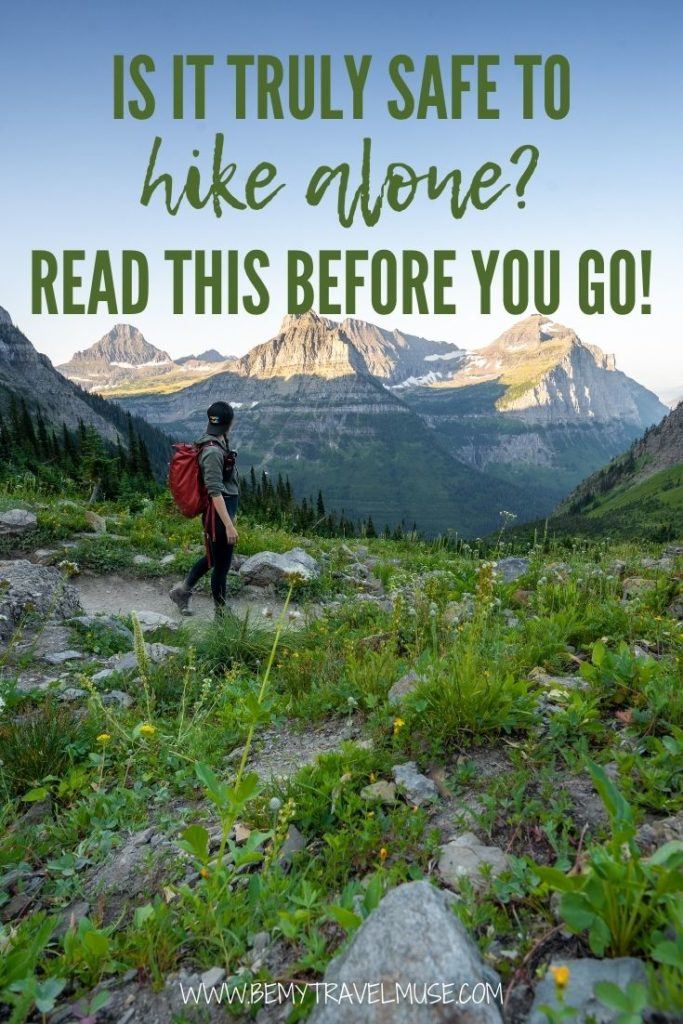
I’ll never forget my first solo hike. It wasn’t something I’d planned and prepped for. It wasn’t even intentional, as most of my solo experiences started out. Fact was, there was just no one around to join me, so I went alone.
It was a night hike. It wasn’t particularly far – just a few miles to the Kawah Ijen volcano in a tiny village in East Java. I’d ridden there at 3am on the back of an ojek, or motorbike taxi, climbed off, bid my driver adieu, wrapped a sarong around my shoulders and got to walking.
I remember looking up and being in awe of the stars that night. I made my way to the famous blue flames, saw the local men walking up and down with their shoulder baskets full of sulfur, and made my way upwards to the ridge to take it all in.
The sunrise that day over the steaming volcano will go down as one of the best of my life.
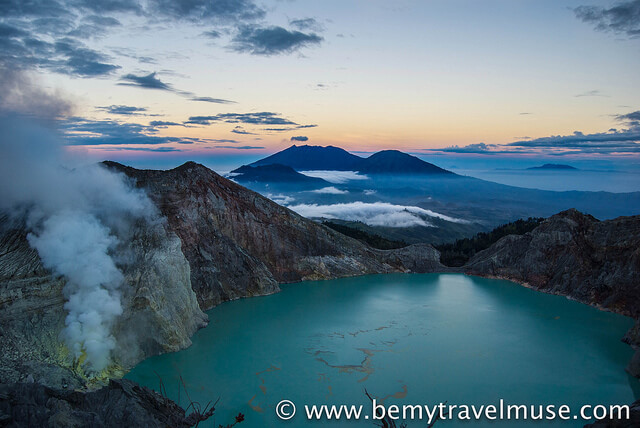
That was 7 years ago now. I didn’t know back then that I was stumbling upon a new love of hiking solo, and particularly at night to catch the sunrise.
Just like solo traveling, solo hiking has become something I crave. It’s my temple, my chance to get away from everyone and everything and just feel connected to nature.
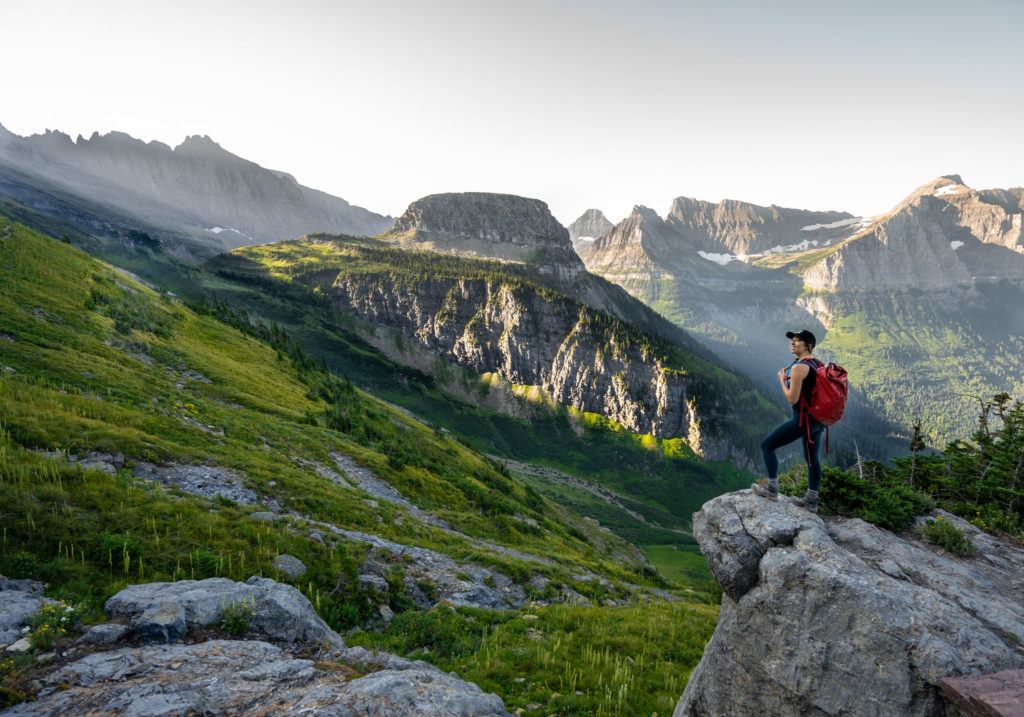
But some people will tell you that solo hiking is never OK. They insist that it is always dangerous and you should never do it. I used to believe them, but now I know that like anything, it doesn’t have to be reckless or dangerous.
And I can’t help but point out that it’s almost always women who are told never to hike or travel alone. So to me, all the more reason to smash that stereotype! These are my best tips for solo hiking:
Work Your Way Up to Harder Trails
That first solo hike of mine was probably only a few miles. I was alone on the trail for much of it, but it was also a very simple trail with no route finding involved.
The second time I set out to hike solo, I guess you could say I didn’t take my own advice because I picked the 14-day Annapurna Circuit in the Nepalese Himalayas. But that particular trail is quite popular, and I knew I wouldn’t have to be alone.
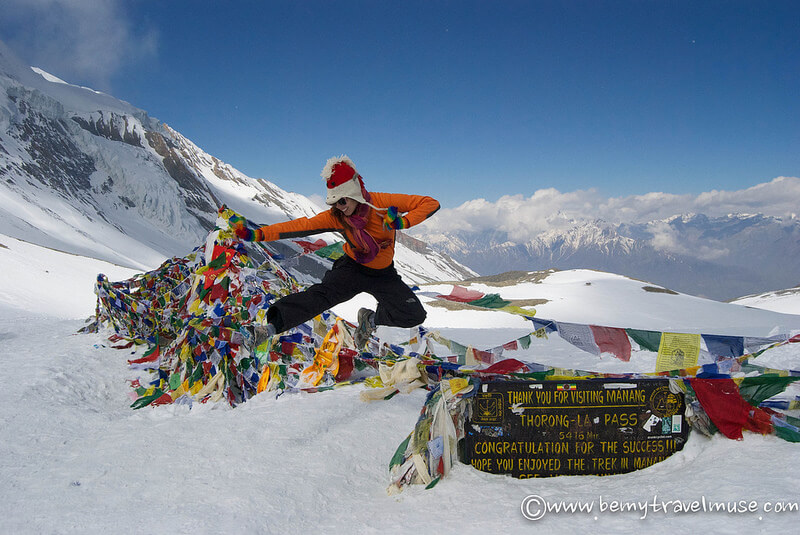
As fate would have it, I met Ellen, a Belgian badass broad who I ended up doing the entire hike with. We even added on some extra days to hike the Sanctuary too!
I eased into my first solo backcountry backpacking trip as well. I had done many backpacking trips at that point, and had even guided a few before doing the four day Santa Cruz trek in Peru. My only hesitation was the incredible altitude, as most of the hike takes place over 4000 m. But on my first evening I met a wonderful group and I ended up hiking with them as well.
So there’s really two ways to go here: you can pick a trail where you are intentionally alone, or you can take a trail where you set off alone, knowing that you’ll meet others along the way. Both methods are fantastic.
But is Solo Hiking Really Safe?
Common wisdom states that hiking alone is dangerous. I suppose there is some merit to that. Heading off into glaciated landscape without a trail, proper gear, or any kind of route finding experience probably is a death sentence, but what about staying on the trail in an established national or state park? Yes, things can go wrong, but they can on the freeway, the sidewalk, and medically too at any time.
I try not to let any fear of the outdoors keep me from experiencing it. And the more time I spend in it, the more I realize that I am OK, I know what to do, and I can keep myself safe. When it is windy, I will put rocks inside my tent, when it is rainy or snowy, I will make sure I have the right gear, and when it is dark, I will bring a headlamp. It doesn’t have to be rocket science.
What about animals? Yes, animals are a factor, but probably not as often as you might think.
Looking up the main causes of human deaths by animals, I don’t see much of what you’d encounter in the mountains of the US or Canada, for example. The biggest killers are mosquitoes, snakes, dogs, and tsetse flies, in that order. Unfortunately these are mostly in the developing world, but as a hiker in North America that means your chances of a fatal animal attack are pretty low, especially if you’re respecting them.
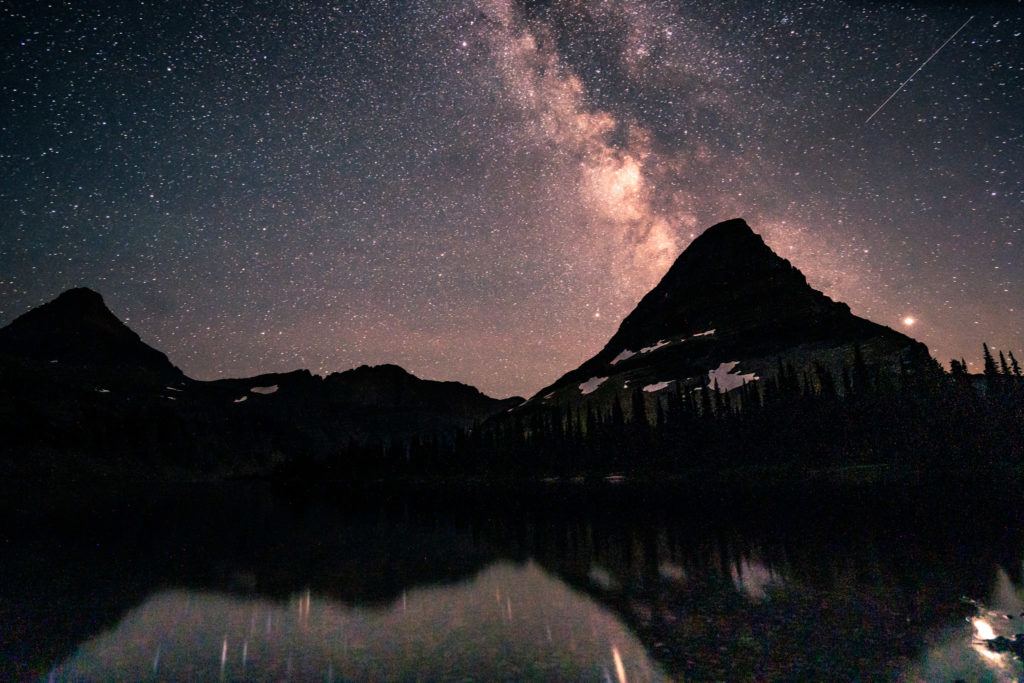
Of course, it’s important to use bear cans to keep bears out of your food, and in Montana night hiking in Glacier National Park, I also carried bear spray and made sure I knew how to use it. I was worried at first, but after looking up how many bear attacks there were in the park over the years, the number was so few I relaxed quite a bit.
Finally, stick to established trails. Don’t leave the trail or even veer off of it, both for you and for the environment. Also, consider carrying a satellite phone so that you can contact people if you do have an emergency. These are all ways to stay connected and responsible when you’re out there.
One of the biggest factors probably has to do with our own preparedness. Staying warm, staying fed, and staying hydrated are all very important. For a day hike, that’s a bit easier but when backpacking, it takes a bit more preparation. I have a backpacking checklist here and my free The Outdoors 101 course that you can also check out for a lot more information on how to recreate responsibly and safely.
But Isn’t it Better with Others?
As my friend Jen told me when recounting the story of hiking in Patagonia, when going with people who are ill prepared, being with others does not necessarily make you safer.
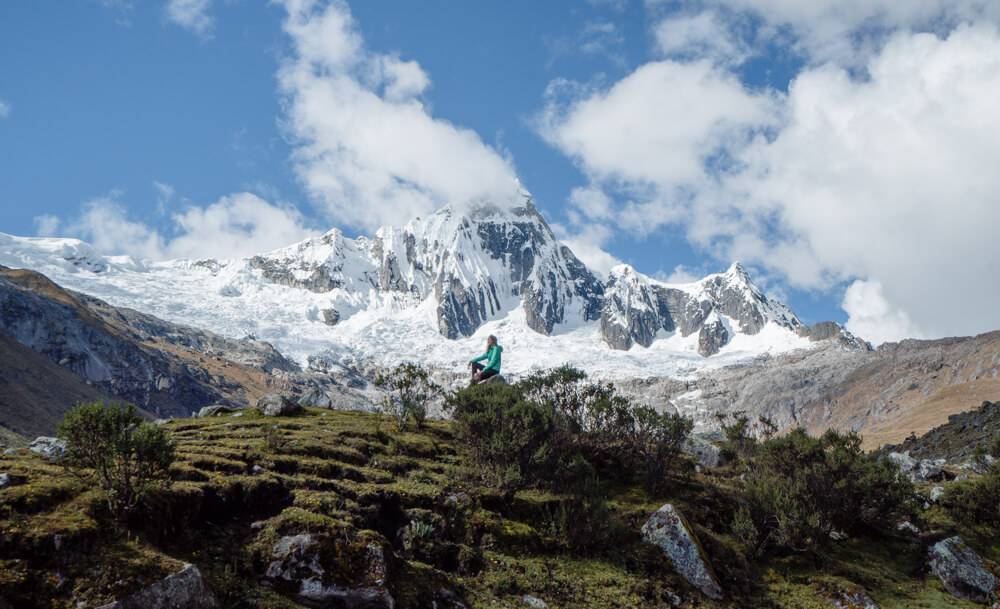
Plus, just like solo traveling, solo hiking for me is about the opportunity to get closer to myself. It’s about being fully immersed in my environment with zero distractions. It’s almost a meditation in that way.
As much as I love sharing this experience with other people, there’s just nothing that can compare with staring up at the night sky and feeling so small, the incredible peace of the wilderness when you’re out there alone, and the sense of accomplishment that comes from setting up your own camp, having a successful trip, leaving no trace, and coming home stronger and more resourceful. These are skills that have served me well in all aspects of life.
Some Tips and Tricks to Make Hiking Alone Easier
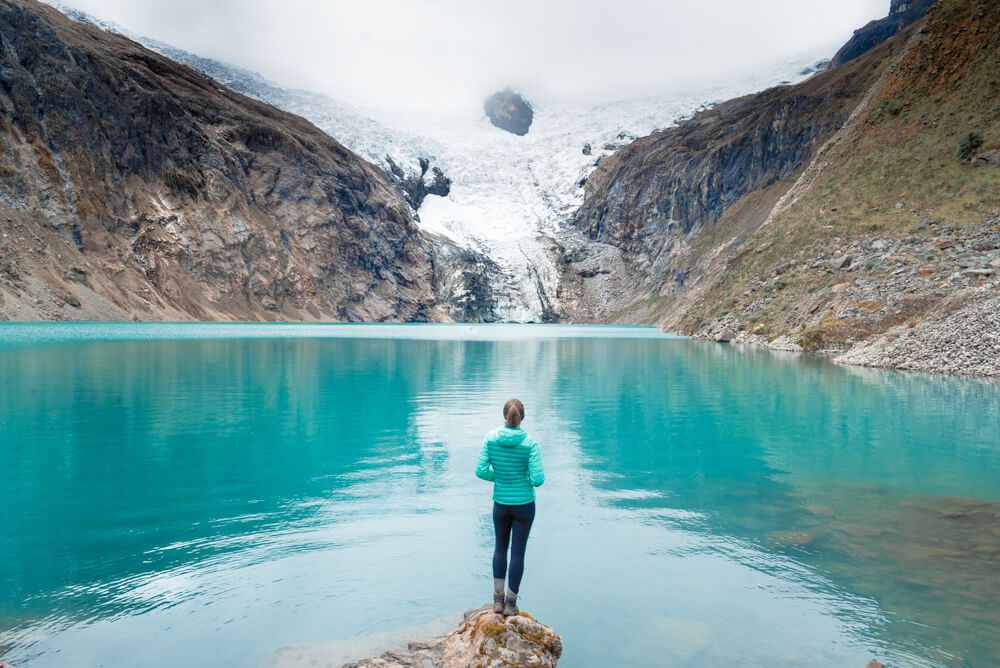
The best way to feel confident and comfortable hiking solo is to be truly prepared. I really like to wing it most of the time when I travel, but I don’t do that when it comes to backpacking. I really research my trail, make sure I am prepared for the weather I might encounter, and since I need to be self-reliant, I tend to have the following with me:
- The trail map downloaded onto maps.me.
- A solar charger to charge my steriPen and phone (since I’m using it for navigation).
- If available, a paper map of the route as well, and some kind of waterproof sleeve if needed.
- A little bit more food than I will really need, just in case.
I also make sure to let someone know when I expect to finish, just in case. Many trails have a register as well so that rangers can keep track of which backpackers are where and send out search and rescue if someone doesn’t come back. It will depend on which trail you choose and where you are in the world.
In terms of other people, I have yet to encounter a total creep on the trails. Of course it can happen, but I like to think the kinds of people who are attracted to these beautiful adventures and Mother Nature are somewhat better specimens of human. At least, that’s been my experience so far.

The trail is a friendly place, but it can also be the perfect opportunity for solitude. I’ve loved every solo hike that I have done, and yes I fully believe that women can hike alone, just like men can hike alone, and that with the right preparedness and precautions, it can be done safely.
I know not everyone agrees, just like not everyone agrees women should travel solo, but I wouldn’t trade either of those experiences for the world!
Ernie Bilbrough says
Hi Kristin,
Have you ever used a satellite phone and if so do you have a preferred brand/model? Any experience with one outside the U.S.?
Great article and love your photography.
Ernie
Kristin says
I usually rent one when in the Alaskan backcountry but no I don’t have a preferred brand, sorry!
Mike says
I love hiking alone and have done it for 30 years. Most places I have been I jave see women solo hiking also. If it’s your passion go for it no matter who you are.
Kristin says
Yass mike!
Lee-Anne says
Hi Kristin,
I really appreciate your blog – Quality content and a lot of information in one place. Thanks for the level of work invested to bring forward a lot of great resources and recount through you own personal experiences. As a female solo traveller – your tips and experience meeting others everywhere you go are very familiar, and spot on 🙂
Kristin says
Glad you like it!
Lori says
I always hike alone. I stick to established trails and carry a paper map. I sometimes get looks when I’m bouldering like “Darn, you go girl,” and other times the alpha male in the group ahead of me will hold back to help me across a rock crossing at a stream. I don’t flinch at either. I’m proud of what I can do and still accept any help I’m offered.
Kristin says
Same! I like your style.